We Go The Extra Distance For Our Clients
Practice Areas
Sandy Springs Slip and Fall Accident Attorney
Slip-and-fall accidents really can occur anywhere: from quiet neighborhood sidewalks to indoor shopping malls and beyond. Slip-and-fall injuries can seem innocuous at first, but they can actually have severe and lasting effects on someone’s life. If you have suffered from a slip-and-fall injury as a result of someone’s negligence, you need a Sandy Springs slip and fall accident attorney that can guide you through the legal process and help you receive the compensation you deserve. The Sandy Springs premises liability lawyers at Ashenden & Associates are here to help.
We strive to hold negligent people accountable for their actions and offer a comprehensive approach to seeking justice and compensation for our clients. Call us at 770-394-8909 to schedule a free consultation with a slip-and-fall lawyer on our team.
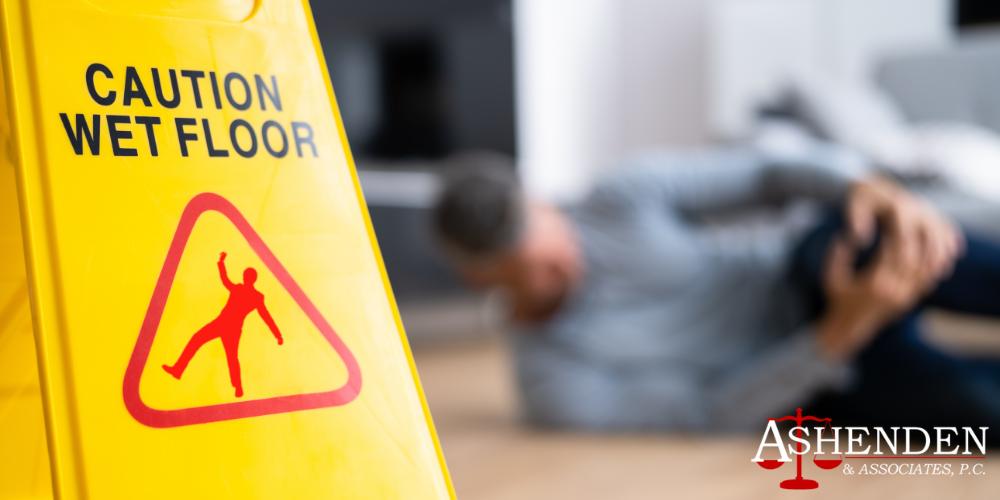
What is Premises Liability?
Premises liability is a legal concept which states that property owners have a responsibility to maintain a safe environment and prevent potential harm to visitors or guests on their property. This means that those who own or control a property have a duty to ensure that their environment is free from dangerous or hazardous conditions that might cause personal injuries.
The idea behind premises liability is straightforward: if someone invites or allows you onto their property, whether it’s a home, business, or public space, they have a responsibility to ensure that you are not exposed to unnecessary risks. If you are injured due to unsafe conditions that were foreseeable and preventable, the property owner or manager can be held legally responsible for those injuries in a premises liability lawsuit.
Common Premises Liability Violations
Premises liability violations can occur in a variety of contexts. Examples of situations that might fall under premises liability include:
- Slip-and-fall accidents due to wet floors or uneven surfaces;
- Injuries caused by inadequate security or lighting;
- Harm resulting from falling objects or poorly maintained structures;
- Accidents at swimming pools, amusement parks, or other recreational areas; and
- Exposure to toxic substances or chemicals.
However, it’s important to note that just because an injury occurs on someone’s property does not automatically make the property owner liable. The victim must prove that the owner was negligent in their duty to maintain a safe environment, and that this negligence directly led to the injury. Factors like the reason the injured person was on the property, whether the hazard was obvious, and if the property owner was aware of (or should have been aware of) the danger all play a role in determining liability.
Common Injuries Caused by Slip-and-Fall Accidents
Slip-and-fall accidents can injure various parts of the body. Not only that, but the injuries can range in severity depending on the victim’s age or pre-existing medical conditions. Some of the most common slip-and-fall injuries include:
- Sprained or strained ligaments and muscles
- Fractured or broken bones, especially wrists, hips, and ankles
- Concussions and other traumatic brain injuries (TBIs)
- Cuts, abrasions, and bruises
- Dislocated joints
- Spinal cord injuries and herniated discs
- Knee injuries, including torn ligaments or meniscus
- Shoulder injuries, such as dislocations or torn rotator cuffs
- Contusions and hematomas
- Facial or dental injuries
Slip-and-fall accident injuries can range from mild to severe and may require varying levels of medical attention, rehabilitation, and recovery time. Be sure to contact a Sandy Springs traumatic brain injury attorney or a Sandy Springs spinal cord injury attorney for more information about your legal options.
Possible Liable Parties in a Slip-and-Fall Accident Case
In a slip-and-fall accident, determining liability is crucial. Depending on the circumstances of the accident and the location where it took place, various parties could be held responsible. Here’s a list of potential liable parties:
- Property Owners: The most common liable party in slip-and-fall cases. They have a responsibility to ensure their property is safe for visitors.
- Tenants or Renters: If something like a slip-and-fall accident occurs in a rented space, the tenant could be liable, especially if the lease agreement assigns maintenance responsibilities to them.
- Business Owners: In commercial spaces, business owners are often held accountable for accidents that happen within their establishments, slip-and-fall accidents included.
- Government Entities: If a slip-and-fall accident occurs on public property like a sidewalk, park, or municipal building, a local or state government entity might be liable.
- Employers: In workplace slip-and-fall accidents, the employer can be held liable, especially if they failed to adhere to workplace safety standards.
- Maintenance Companies: If a third-party company is responsible for maintaining the property and fails to do so adequately, they can be held liable for causing a slip-and-fall injury.
- Manufacturers: If a slip-and-fall accident is due to a defective product, such as faulty flooring or a malfunctioning escalator, the product’s manufacturer might be held accountable.
It’s important to note that determining liability in a slip-and-fall lawsuit often requires thorough investigation and expert legal insight. Multiple parties could share responsibility, or unique circumstances could shift liability from one entity to another. Working with a knowledgeable slip-and-fall injury attorney can help ensure that all of the potential liable parties are considered.
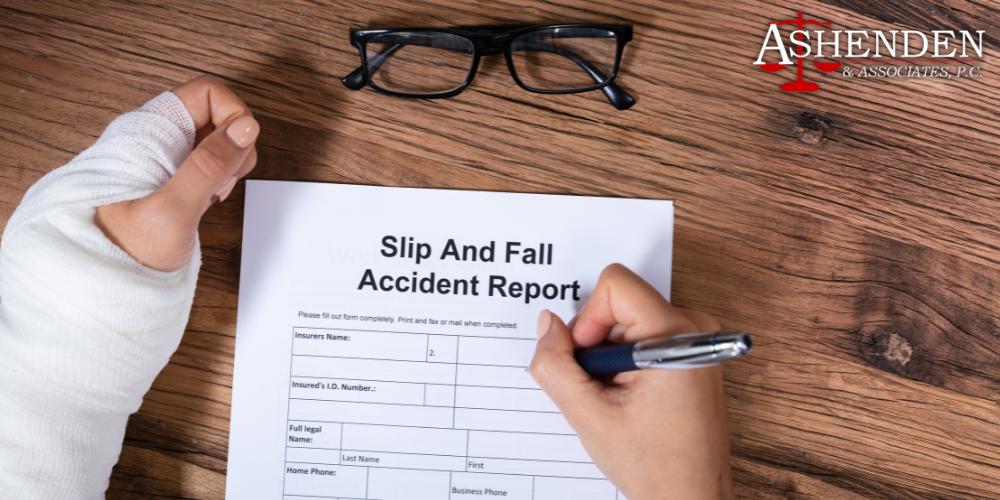
When Can a Property Owner Be Held Liable for a Slip-and-Fall Accident?
Property owners have an obligation to maintain their premises in a condition that is safe for visitors, guests, and tenants. This duty extends to various parts of a property, from stairs and flooring to sidewalks and parking areas. When they neglect this responsibility, and someone gets injured as a result, they could be held liable. Below are some instances in which a negligent property owner may be held liable for causing a slip-and-fall accident.
Slipping, Tripping, and Falling on Stairs
Stairs pose unique risks, especially if not properly maintained. A property owner can be held liable for accidents on stairs due to:
- Worn or torn carpeting that causes someone to trip
- Missing or loose handrails
- Stairs that are uneven or have varying riser heights
- Poor lighting that obscures vision
- The presence of debris or obstacles
Slipping, Tripping, and Falling on Carpet, Rugs, and Floor Debris
Flooring materials and the items on them can be major contributors to slip-and-fall accidents. In these situations, a property owner might be liable for:
- Loose or frayed carpets and rugs that haven’t been secured or replaced
- Piled-up debris or clutter, especially on walkways
- Failure to promptly clean up spills or debris from the floor
- Using rugs or mats that do not have non-slip backing or that curl up at the edges
Slipping on Water, Ice, or Snow
The presence of water, ice, or snow can make surfaces exceptionally slippery. Property owners have a duty to address these hazards in a timely manner. They could be found liable for:
- Not clearing snow or ice from sidewalks, entryways, or parking lots within a reasonable time after a snowstorm
- Allowing water to pool due to poor drainage or leaking pipes
- Not placing warning signs near temporary wet areas, such as after mopping
- Failing to provide mats or other means of drying footwear in entrance areas during inclement weather
Tripping and Falling on a Broken Sidewalk
Sidewalks are meant to provide a safe path for pedestrians. When they’re in disrepair, accidents can easily occur. Property owners with sidewalks may be found liable in a slip-and-fall lawsuit for:
- Ignoring cracks or uneven segments of the sidewalk that pose tripping hazards.
- Failing to mark or barricade areas under repair.
- Not addressing tree roots or other natural growths that distort the path.
- Overlooking the buildup of moss or algae which can make surfaces slippery.
Proving Negligence in a Slip-and-Fall Accident Claim
In slip-and-fall accident claims, one of the most important components to establish is negligence, specifically on the part of the property owner or other responsible party. Here’s a breakdown of what’s involved in proving negligence:
- Duty of Care: This refers to the property owner’s responsibility to protect guests from reasonable and foreseeable harm
- Breach of Duty: This is the property owner’s failure to reasonably protect visitors from harm. This could be through actions as well as omissions, like failing to fix a hazardous condition or neglecting regular maintenance checks.
- Causation: This is what links the property owner’s negligence to the victim’s injuries.
- Damages: This refers to the physical, emotional, or financial losses the victim suffered as a result of their injuries.
Proving negligence can be complex, especially with an assumption of risk defense, but it’s crucial in validating a victim’s claim for compensation. An experienced slip-and-fall lawyer will know how to investigate the situation and prove all four Ds of negligence in this kind of premises liability lawsuit.
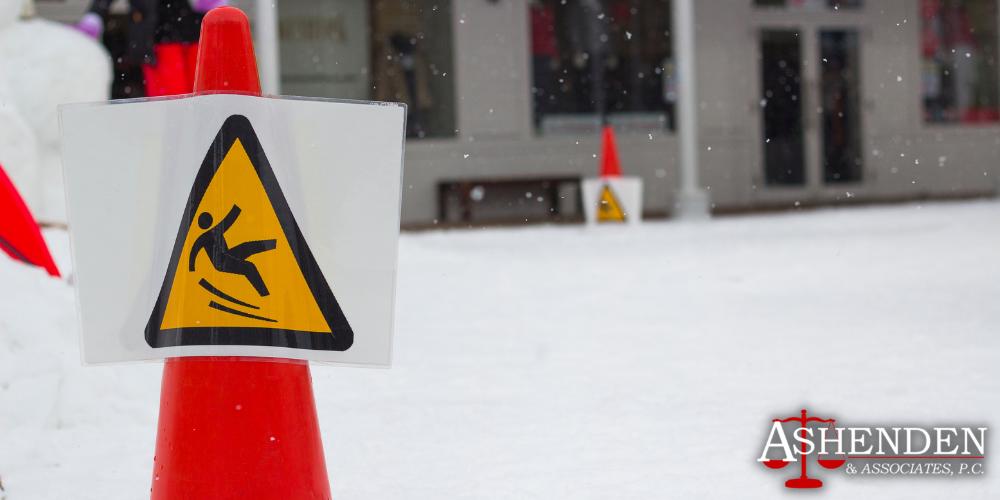
What if a Property Owner Says That You Caused Your Accident?
When faced with a slip-and-fall claim, the property owner or their insurance company may assert that the injured person is wholly or partially responsible for the accident. If accepted in court, this strategy can reduce or even nullify the compensation the victim might receive.
If a property owner claims you caused your accident, it’s essential not to admit fault at the scene, even if you think you might’ve been partially responsible. Such admissions can be used against you later. Instead, document the scene, seek medical attention, and consider consulting with an attorney to understand your rights and potential avenues for compensation.
How a Sandy Springs Slip-and-Fall Accident Lawyer Can Help
Navigating the Georgia legal system in the aftermath of a slip-and-fall accident can be overwhelming. Victims often face mounting medical expenses, lost wages, and physical and emotional trauma, and don’t need the added stress of excessive paperwork and confusing legal jargon. At Ashenden & Associates, our dedicated slip-and-fall injury lawyers in Sandy Springs stand ready to guide victims through each step of the compensation process. Below are some of the ways we can make a difference in your slip-and-fall injury case.
Protecting Legal Rights
In personal injury cases, like slip-and-fall injury cases, it’s important that victims fully understand the process they’ll have to undergo in order to receive compensation. When you trust the legal professionals at Ashenden & Associates with your premises liability case, you can rest assured that you will have an experienced guide who can make you aware of deadlines, required legal proceedings, and more.
Beyond just guiding you through the legal technicalities of your premises liability case, we also play the role of your trusted legal advisor. We believe that every client deserves to be fully informed. Our attorneys will comprehensively break down your legal rights and the avenues available to you, empowering you to make decisions that align with your best interests.
Gathering Evidence
Evidence forms the bedrock of any personal injury case. The initial hours and days following a slip-and-fall accident are crucial for evidence collection. Our attorneys will dive into action, examining the site of the accident to ensure that no detail, however minute, is overlooked. Our efforts don’t stop at the scene of the accident. We also engage a network of expert witnesses, encompassing medical professionals, property safety specialists, and more, who may be able to lend their expertise and bolster your slip-and-fall case.
Proving Negligence
At the heart of a slip-and-fall case lies the concept of negligence. To secure compensation, it’s imperative to prove that the property owner’s carelessness directly contributed to your injuries. This is where the expertise of Ashenden & Associates shines. Drawing on years of experience and a deep understanding of premises liability law, our team will be able to craft compelling arguments demonstrating the property owner’s negligence. We will meticulously build a strong case in your favor, weaving together elements like photographs of the accident scene, eyewitness accounts, and other crucial evidence to prove the property owner’s negligence.
Calculating Damages
The repercussions of a slip-and-fall accident can span months, years, or even a lifetime. Our attorneys will carry out a comprehensive evaluation of all the damages you’ve previously suffered. We’ll also look ahead, considering potential future medical treatments or lost job earnings, to ensure that the compensation you seek truly mirrors the long-term impact of the accident on your life.
Negotiating Settlements
Navigating the maze of insurance claims and negotiations can be daunting. But with Ashenden & Associates by your side, you’re equipped with a strategic advantage. Our approach to settlement negotiations is methodical and evidence-driven, ensuring that we push for the maximum possible compensation on your behalf. As your unwavering advocates, we will stand firm against the negligent party and their insurance company, using our negotiation skills to make certain your needs and rights stay at the forefront of your case.
Court Representation
While many slip-and-fall cases find resolution through settlements, there are instances where going to trial may be necessary. Should your case demand its day in court, you can rest assured knowing that our attorneys are seasoned litigators. We come to the courtroom prepared and poised, ready to present your case with passion and precision. We will draw on our extensive trial experience to secure a verdict that acknowledges your suffering and compensates you fairly.
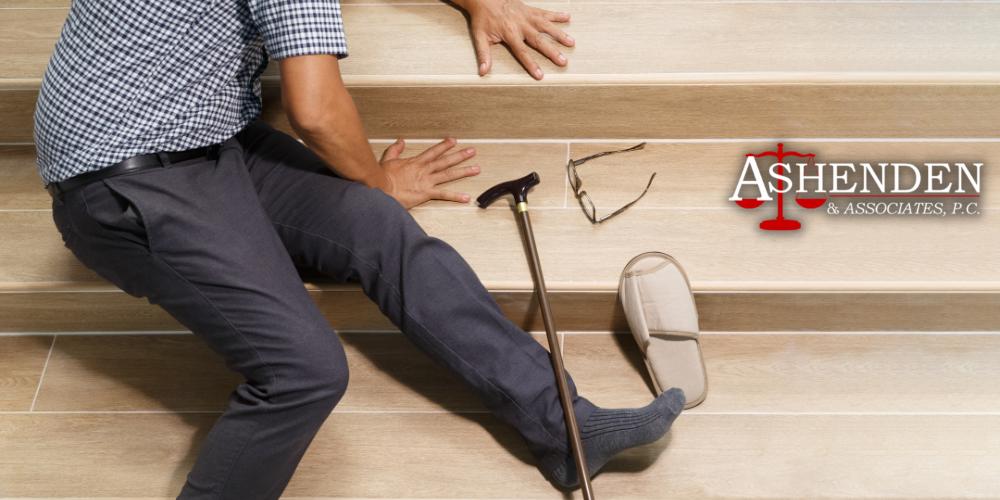
Damages for a Slip-and-Fall Accident
In the aftermath of a slip-and-fall accident, victims can face a myriad of financial, physical, and emotional challenges. The legal term “damages” refers to the compensation an injured person may be entitled to receive for their losses. These damages are generally categorized into economic and non-economic types. Below are some of the different kinds of damages our slip-and-fall attorneys may be able to help victims recover compensation for.
Economic Damages
Economic damages represent the tangible financial losses a victim incurs due to the accident. They can be clearly quantified and may include:
- Medical Expenses: This encompasses past and future medical bills, including hospital stays, surgeries, physical therapy, medications, and any other necessary treatments.
- Lost Wages: If the injury forces the victim to miss work or reduces their capacity to earn, they can claim compensation for these lost earnings.
- Rehabilitation Costs: For severe injuries, victims might require rehabilitation or specialized therapies to regain their quality of life.
- Property Damage: If personal belongings (like glasses, jewelry, or clothing) are damaged in the fall, their repair or replacement costs can be claimed.
- Funeral and Burial Expenses: In some situations, victims of slip-and-fall accidents may die as a result of their injuries. In these cases, the victim’s immediate family may be able to recover compensation for the cost of the victim’s funeral or other burial expenses.
Non-Economic Damages
Non-economic damages represent the intangible losses a victim suffers from. While they can’t be precisely quantified like economic damages, they are no less significant. They can include:
- Pain and Suffering: This compensation acknowledges the physical pain and suffering experienced due to the injury.
- Emotional Distress: Some accidents can result in psychological impacts such as anxiety, depression, or PTSD. Victims can seek damages for this emotional turmoil.
- Loss of Enjoyment: If injuries from the fall prevent the victim from enjoying daily activities or hobbies they once loved, compensation can be claimed.
- Loss of Consortium: This pertains to the negative effects the injury might have on the victim’s relationship with their spouse or family.
Georgia Statute of Limitations for a Slip-and-Fall Accident Claim
Like any personal injury lawsuit, after someone suffers from a slip-and-fall, they have a limited amount of time in which to file a lawsuit. This is referred to as the statute of limitations, and once the injury occurs, the clock starts ticking. Victims of slip-and-fall accidents must file a claim within two years of the date the injury occurred.
The slip-and-fall injury attorneys at Ashenden & Associates can ensure that your lawsuit is filed on time, so that your right to pursue compensation is never compromised.
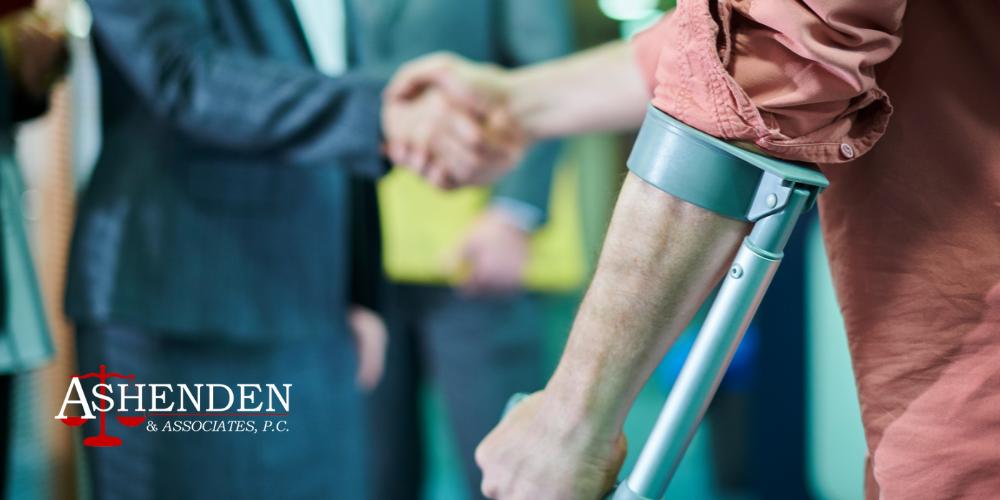
Call a Sandy Springs Slip-and-Fall Accident Attorney at Ashenden & Associates Today
If you have suffered from a slip-and-fall injury as a result of someone else’s negligence, you may be able to file a lawsuit and recover compensation for things like medical bills, lost wages, and more. Sandy Springs personal injury attorneys at Ashenden & Associates, P.C. are dedicated to ensuring that negligent property owners are held accountable and that victims receive the compensation they rightfully deserve. With a track record of successful personal injury cases, we stand as a beacon of hope in the legal landscape of Sandy Springs and the greater area.
Don’t let the weight of medical bills, lost wages, and unanswered questions beat you down. Reach out to Ashenden & Associates today, and let us be your guide, advocate, and support in this challenging time. Call 770-394-8909 or contact us online and speak to an experienced slip-and-fall injury lawyer on our team regarding your case.

